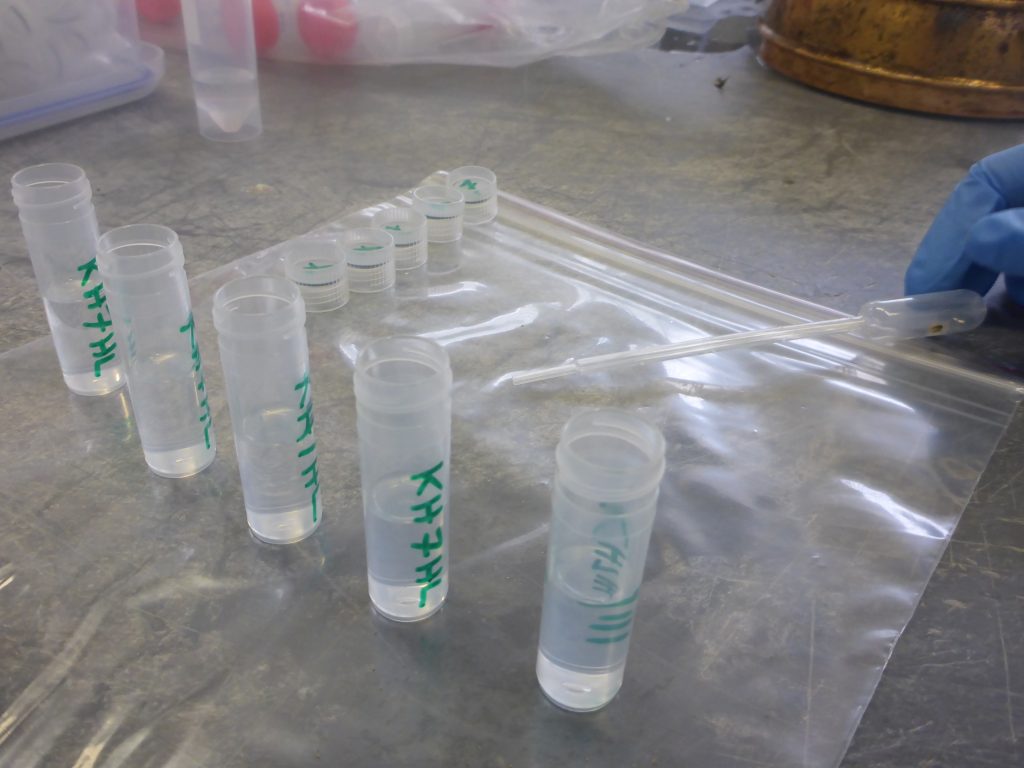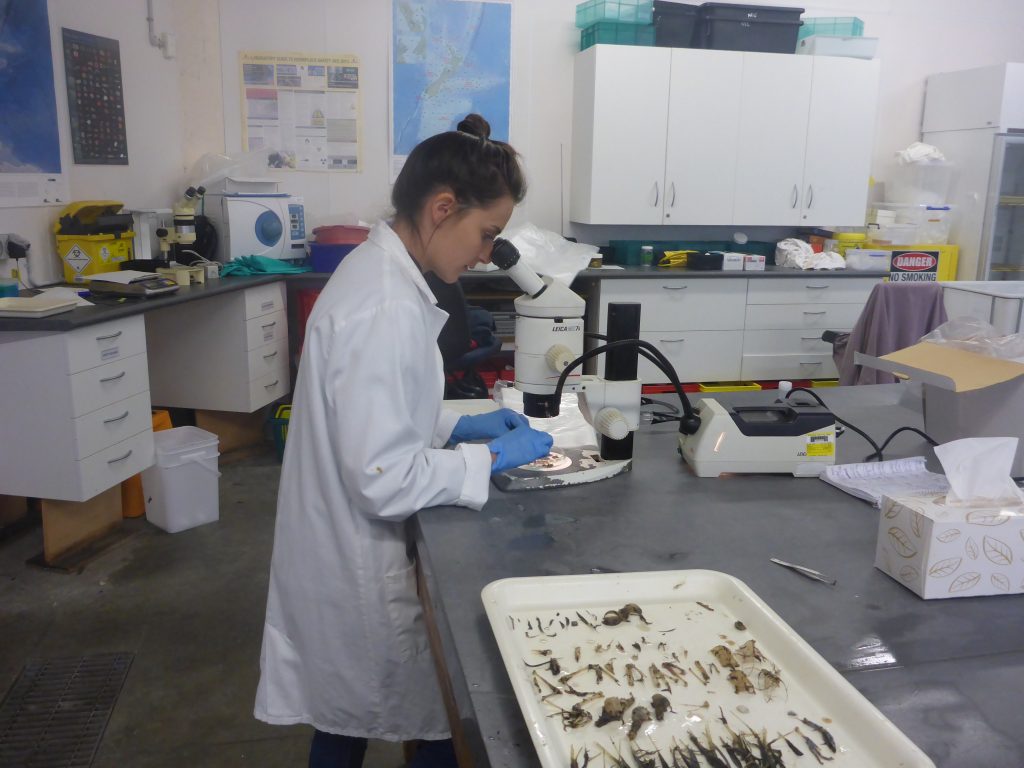
Scat (poo) Collection
WHY SCAT COLLECTION IS IMPORTANT
Scat (the scientific term for seal poo) is an incredible source of information. It can tell us about the health (or not) of an individual, but also about their personal hunting preferences. As leopard seals typically hunt when in the water, unless they raise their heads with the prey item in their mouth, it can be difficult to determine what they are eating. Scat is therefore a great way to get information about what they have been eating, without disturbing the animal.
Scat can look like a thick puddle (and can be a whole range of colours) or similar to a large deposit from a dog!
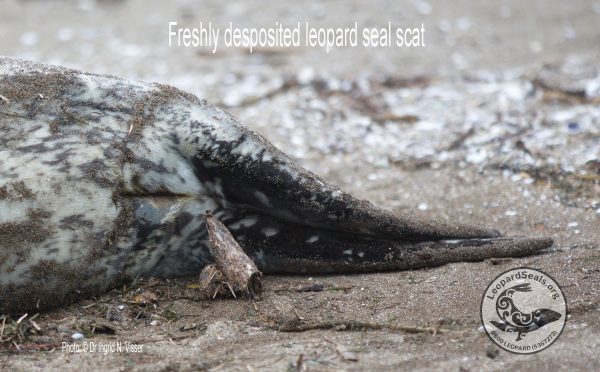
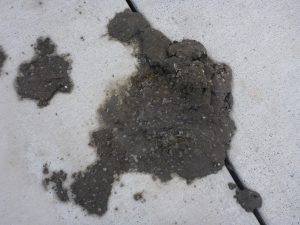
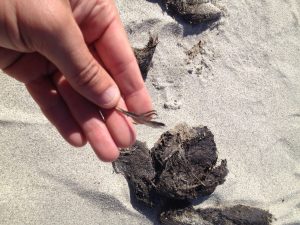
So far we have examined scat that contains feathers, bones and fish scales and we are currently analyzing these scats to identify species.
How to collect seal scat for the truly dedicated Citizen Scientist!
We need the whole sample as each scat can contain a wealth of information such as prey types but also the percentage of a particular prey. Also, as some parts of an animal digest at different rates (compare meat to bones), the whole sample gives researchers a better understanding of the digestive process of the seal.
Follow the steps below to assist us by collecting scat samples.
1. Please ensure that you do not disturb the seal in order to collect the scat. Wait for the seal to move at least 20 metres away from the scat before collecting it.
2. Ensure that you wear gloves (or have a plastic bag over your hand).
3. Please collect the whole sample – which might be broken into parts. If the scat is on sand, try not to collect too much, rather take only the scat – although we understand that it may be covered in sand.
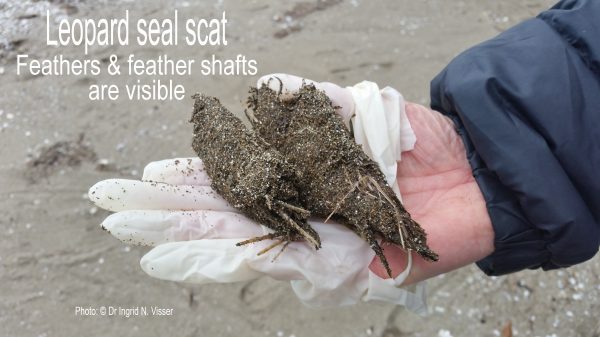
4. Place the scat into a container (an ice-cream container is ideal, but double bagging using ziplock bags can work too) and place in either a cool dark spot (such as in a garage or tool shed) or into a freezer. Do not store in the same place as human or animal food and do not leave accessible to animals or children.
5. Please call us so that we can arrange pickup/shipping of the scat.
LeopardSeals.org takes no responsibility for the actions of members of the public collecting scat samples. It is each persons responsibility to ensure their own safety and as a minimum follow these guidelines on approaching leopard seals and adhere to the Marine Mammal Protections Act (MMPA).
Back at the Laboratory
Once a seal scat arrives to our lab, we ‘dismantle’ the scat by gently washing it in warm water. This is all done inside a very fine sieve, to ensure that all prey remains are collected.
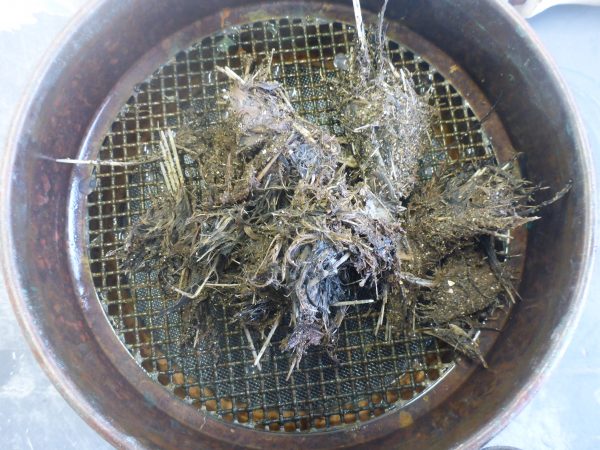
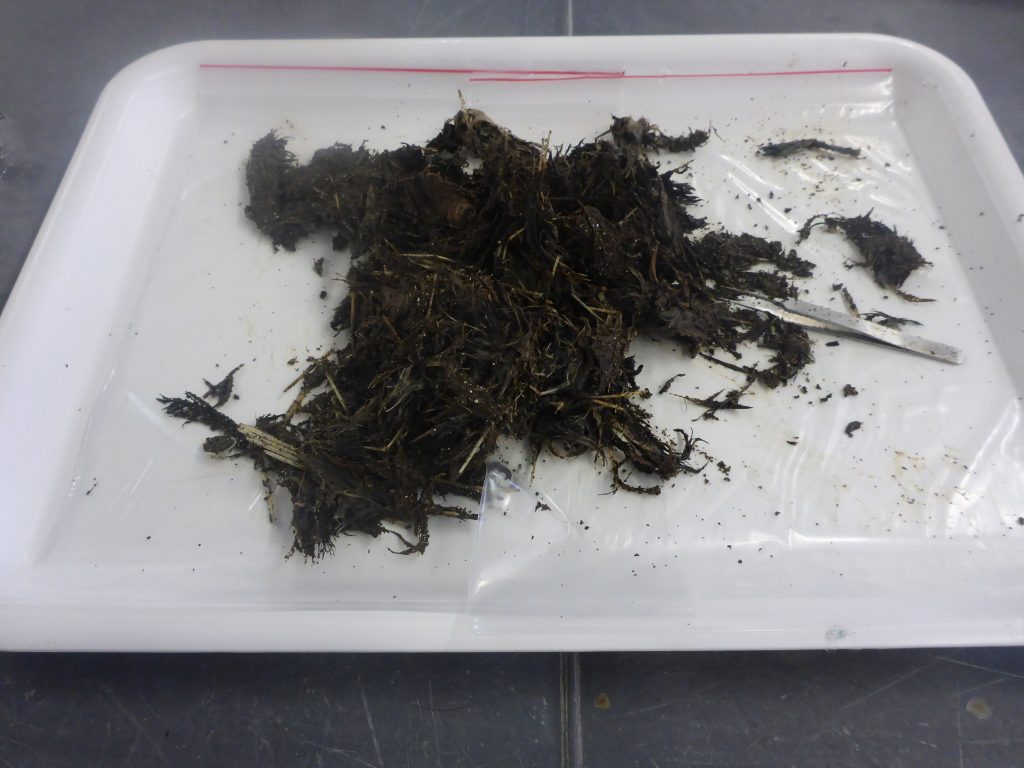
Once the prey remains are removed they are either stored in formula to protect their DNA, refrozen, or air dried. In all cases they are then processed by experts to help us identify the prey species.
